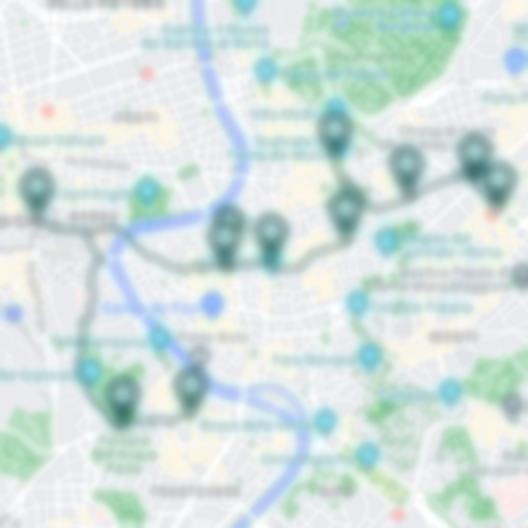Exploring Italy, the land renowned for its captivating history, unparalleled art, and mouth-watering cuisine, can be an unforgettable experience, but also an expensive one if not carefully planned. However, by timing your visit strategically, you can enjoy all the marvelous sights and tastes Italy has to offer without breaking the bank. Discovering the most cost-effective times to visit Italy requires a blend of local insight and practical travel tips. Before diving into the details, for those looking to tread the less traveled paths and experience Italy in a unique way, check out our special guide at Italy on Foot.
Italy’s Tourist Seasons
Italy’s tourist influx can generally be divided into three main seasons: high, shoulder, and low. Each of these periods has its own set of advantages and drawbacks, especially when it comes to the cost of travel.
The high season, spanning from late June to August, coincides with the summer vacation period in Europe and North America, leading to a significant surge in tourists. This is when Italy is at its most vibrant, with sunny days and a plethora of festivals. However, this popularity comes at a cost, both literally and figuratively. Accommodation prices soar, and major attractions are often crowded, which can detract from the overall experience.
On the other hand, the shoulder season, which includes April to June and September to October, offers a more balanced experience. The weather remains pleasant, ideal for outdoor activities and exploring the countryside, and though popular sites are still busy, they’re not as overcrowded as in the summer months. Prices for flights and hotels drop significantly compared to the high season, making it a sweet spot for those looking to save money without compromising too much on the experience.
Lastly, the low season, spanning from November through March (excluding the Christmas and New Year period), presents the cheapest prices across the board. While the weather can be unpredictable, with colder temperatures and increased rainfall, especially in the northern regions, this period offers a unique perspective of Italy. The reduced number of tourists means more opportunities to interact with locals and immerse yourself in the authentic Italian way of life.
The Magic of Winter in Italy
Visiting Italy during the winter months lets you see a different side of this vibrant country. Beyond the obvious cost savings on flights and accommodations, you’re in for a treat with winter-specific attractions. Cities like Turin and Milan come alive with Christmas markets, and the less crowded streets allow for a more leisurely exploration of famous sites.
Moreover, winter in Italy doesn’t mean you’re confined indoors. The country’s diverse geography means you can enjoy winter sports in the Alps and the Dolomites. Resorts in these areas offer competitive rates outside the Christmas holiday period, providing an affordable gateway to some of the world’s best skiing and snowboarding conditions.
Equally appealing is the opportunity to delve into Italy’s rich cultural events during the winter. Opera season is in full swing, and with fewer tourists vying for tickets, attending a performance in one of Italy’s grand opera house becomes a more accessible and enriching experience. Additionally, the cooler months are perfect for indulging in Italy’s culinary delights. Numerous regions host food festivals celebrating local specialties, from truffles in Umbria to chocolate in Sicily, allowing for a delicious exploration of Italy’s gastronomic landscape without the hefty price tag.
Reveling in the Shoulder Season
The shoulder season provides a harmonious balance, blending moderate weather with smaller crowds. This period allows for an exploration of Italy’s outdoors in a comfortable climate, whether you’re trekking through the rolling hills of Tuscany, navigating the waterways of Venice, or discovering the ancient ruins of Rome.
One of the significant advantages of traveling during this time is the amalgamation of good weather, fewer tourists, and lower prices, which extends to airfare, accommodation, attractions, and even dining out. This season is particularly appealing for photographers and nature lovers, as the changing landscapes—from the blooming fields in spring to the rich hues of autumn—offer stunning backdrops for exploration and photography.
Additionally, the shoulder season hosts some of Italy’s most engaging festivals and events. From the historical regattas in Venice to the vibrant wine harvest festivals dotting the countryside, these celebrations provide insight into Italy’s traditions and community spirit. Participating in these festivals allows you to connect with locals and experience the genuine heart of Italian culture, something that can be more challenging to do during the crowded high season.
Finding the cheapest time to visit Italy hinges on a delicate balance between weather preferences, tolerance for crowds, and budget constraints. However, both the low and shoulder seasons offer compelling reasons to consider them for your next Italian adventure. Whether basking in the quiet beauty of Italy’s winters or enjoying the vibrant energy of the shoulder season festivals, these periods offer cost-effective alternatives without compromising the essence of the Italian experience.
Ultimately, the perfect time to visit Italy depends on your personal travel goals and interests. But, by avoiding the peak tourist season, you can uncover a more authentic, affordable, and enjoyable Italian adventure. Remember to plan ahead and keep an open mind—Italy’s charm is year-round, and each season holds its unique treasures waiting to be discovered.


